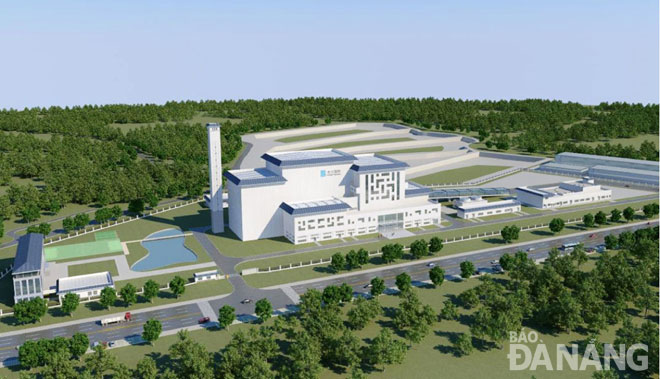Over 823 billion VND domestic waste treatment plant to be built in Da Nang
An over 823 billion VND domestic solid waste treatment plant with daily capacity of 1,000 tonnes will be developed under the public-private partnership (PPP) format at the Da Nang Solid Waste Treatment Complex, in Hoa Khanh Nam Ward, Lien Chieu District.
 |
| An architectural design for the energy-from-waste incinerator at the Khanh Son landfill |
Covering an area of 2.9ha, the soon-to-be-conducted development is one of the ten projects which have already been approved by Da Nang People's Council.
The combination of technologies at the project will comprise a daily-life solid waste incinerator for electricity generation and domestic solid waste classifying and plastic recycling machines, and organic fertilizer production technology.
Under the approved plans, the formulation, evaluation and approval of the project will be completed in the first quarter of 2021, whilst the invitation of bids must be completed in the third quarter of 2021 so that construction can commence on the project as soon as possible.
In particular, the project will be implemented under the BLT (build - lease - transfer) form for a period not exceeding 25 years, of which the construction duration is not more than 2 years.
Da Nang has set a target of collecting 95% of solid waste for treatment over the 2019 – 2025 period, with 12% and 15% to be recycled and reused in 2020 and 2025 respectively.
By 2025, Da Nang will have implemented the sorting of domestic solid waste at families, and 100% of industrial parks and production establishments, service providers, and government agencies and organisations will have classified waste at the source.
Da Nang expects to expand the waste classification at source by 2022. In the 2021-2022 period, solid waste in Da Nang will be classified into 4 categories: recyclable waste, such as paper, plastic and metal; toxic waste, such as batteries and light bulbs; construction waste; and other types of waste.
By KHANH HA- Translated by A.T